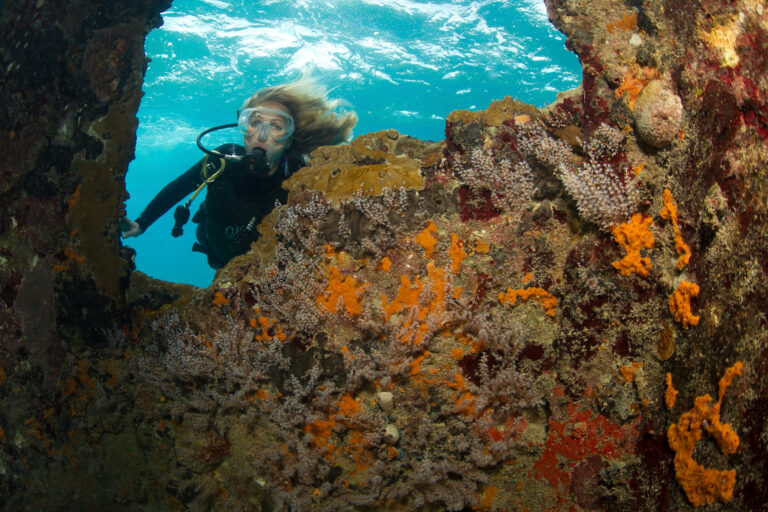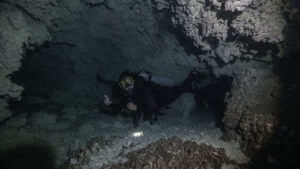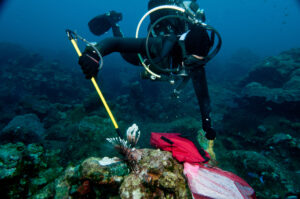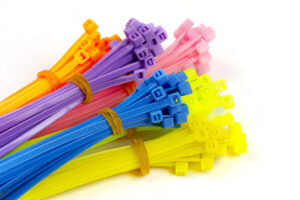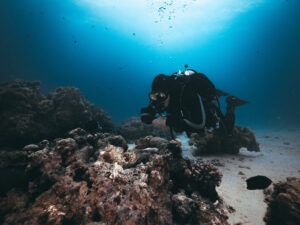What is a Scuba Diving Hood?
A scuba diving hood is a critical component of diving gear, designed to protect divers’ heads from the cold and various underwater hazards. It plays a crucial role in maintaining body temperature during dives in colder waters, thereby enhancing the overall diving experience and safety. Typically made from neoprene or other insulating materials, the hood covers the head and neck, leaving the face exposed or partially covered. Its primary function is thermal insulation, but it also provides some protection against marine life and minor abrasions.
Historical Development
The concept of head protection for underwater activities dates back to the early days of diving. Initially, divers used rudimentary materials such as leather or canvas to cover their heads, primarily for protection against underwater debris and marine life. These early forms were far from the efficient designs we see today and offered minimal thermal protection.
As diving technology advanced, so did the materials and designs used in diving gear. The introduction of neoprene in the mid-20th century marked a significant milestone. Neoprene, a synthetic rubber with excellent insulating properties, became the material of choice for wetsuits and diving hoods. This innovation drastically improved thermal protection, allowing divers to stay underwater for longer periods and explore colder environments safely.
The design of diving hoods has also evolved significantly. Early hoods were simple, often uncomfortable, and did not provide a good seal against water ingress. Modern hoods, however, are designed with ergonomic features that ensure a snug fit, minimize water entry, and maximize comfort. Innovations such as vented hoods and different thicknesses for various water temperatures have further enhanced their effectiveness.
Types of Scuba Diving Hoods
Scuba diving hoods come in various types, each tailored to specific diving conditions and preferences. The most common type is the neoprene hood, known for its flexibility, durability, and excellent thermal insulation. Neoprene hoods are available in different thicknesses, typically ranging from 2mm to 7mm, to suit varying water temperatures.
Silicone and other synthetic materials are also used in some hoods. These materials offer unique benefits, such as increased flexibility and hypoallergenic properties, making them suitable for divers with sensitive skin. Silicone hoods are often preferred for their ease of donning and doffing, as well as their snug fit that prevents water ingress.
Specialty hoods cater to specific diving conditions. Cold water hoods, for instance, are designed with additional thermal layers and often include features like extended bibs that tuck into wetsuits to prevent heat loss. Dry suit hoods are tailored to be used with dry suits, providing a watertight seal around the neck and face. These hoods are crucial for dives in extremely cold waters, where maintaining body heat is critical for diver safety.
Design and Material
The design and material of a scuba diving hood are pivotal in determining its functionality and comfort. Neoprene remains the most popular material due to its excellent insulating properties and durability. Neoprene hoods are typically lined with nylon or other smooth fabrics to enhance comfort and make donning and doffing easier. The thickness of the neoprene can vary, with thicker hoods providing better thermal protection but potentially reducing flexibility.
Hoods can be bibbed or bibless. Bibbed hoods have an extended flap that tucks into the wetsuit, providing an additional barrier against water ingress and heat loss. Bibless hoods, on the other hand, are easier to put on and take off and are preferred by some divers for their simplicity. Vented hoods include small perforations at the top to allow trapped air to escape, preventing uncomfortable air pockets from forming.
The choice of material also impacts the hood’s performance in terms of thermal protection and comfort. Neoprene’s closed-cell structure traps tiny gas bubbles, providing excellent insulation. Other materials, like silicone, offer different benefits such as increased flexibility and a better seal against water. These materials are particularly useful in designing hoods for specific conditions, such as cold water or sensitive skin.
Functionality and Performance
The primary function of a scuba diving hood is to provide thermal protection. The head is one of the most significant sources of heat loss in cold water, and a well-designed hood can significantly reduce this loss, allowing divers to remain comfortable and extend their time underwater. By maintaining body temperature, the hood also helps prevent conditions like hypothermia, which can be life-threatening in extreme cases.
Comfort and fit are crucial aspects of a hood’s functionality. A hood that fits well will not only be more comfortable but also more effective in preventing water from seeping in. A good fit ensures that the hood stays in place during the dive and does not cause distractions. Many modern hoods are designed with ergonomic features, such as contoured shapes and adjustable chin straps, to enhance comfort and fit.
Durability is another important factor. Scuba diving hoods are exposed to harsh conditions, including saltwater, UV rays, and physical abrasion. Materials like neoprene are chosen for their durability and resistance to these elements. Proper maintenance, such as rinsing the hood with fresh water after each dive and storing it away from direct sunlight, can extend its lifespan. Ensuring that the hood remains in good condition is essential for maintaining its thermal properties and overall performance.
Choosing the Right Scuba Diving Hood
Selecting the right scuba diving hood involves considering several factors, including water temperature, dive conditions, and personal preferences. The thickness of the hood is a critical factor; for instance, a 2mm hood might be sufficient for warm waters, while a 7mm hood is better suited for cold water diving. The right thickness will provide adequate thermal protection without compromising comfort and flexibility.
The fit of the hood is equally important. A hood that is too tight can cause discomfort and restrict movement, while a hood that is too loose can allow water to seep in, reducing its thermal efficiency. Divers should try on different sizes and styles to find the one that offers a snug but comfortable fit. It is also beneficial to look for features like adjustable straps or contoured designs that enhance fit and comfort.
Recommendations for hoods can vary based on the diver’s experience level. Beginners might prefer hoods that are easy to put on and take off, with a focus on comfort and ease of use. Intermediate and expert divers, who might be tackling more challenging conditions, may prioritize hoods with advanced features like venting or enhanced thermal protection. Regardless of the level, it is important to choose a hood that meets the specific needs of the dive environment.
Safety Considerations
Safety is a paramount consideration when using a scuba diving hood. One of the primary roles of the hood is to protect the diver from the cold, which is essential for preventing hypothermia. However, there are potential hazards associated with improper use of diving hoods. For instance, a hood that is too tight can restrict blood flow and cause discomfort or even headaches. Conversely, a hood that is too loose can allow water to enter, reducing its effectiveness and potentially leading to heat loss.
To ensure safety, it is important to wear the hood correctly. This includes ensuring that it fits snugly around the face and neck, with no gaps where water can enter. When putting on the hood, it is helpful to smooth out any wrinkles or folds that might cause discomfort or water leakage. Divers should also be aware of the potential for trapped air inside the hood, which can be uncomfortable and distracting. Venting the hood by gently squeezing it to release trapped air before starting the dive can help alleviate this issue.
Another safety tip is to remove the hood carefully after the dive, especially if it has a tight fit. Sudden removal can cause discomfort or even minor injuries. It is recommended to peel the hood off gradually, starting from the back of the head and working forward. This approach minimizes the risk of injury and makes the process more comfortable.
Key Takeaways
Scuba diving hoods are essential for providing thermal protection and enhancing safety during dives. The evolution of materials and design has significantly improved their effectiveness and comfort. By choosing the right hood based on water temperature, dive conditions, and personal preferences, divers can ensure a safer and more enjoyable experience. Proper fit and maintenance are crucial for maximizing the hood’s benefits, making it an indispensable part of any diver’s gear.

